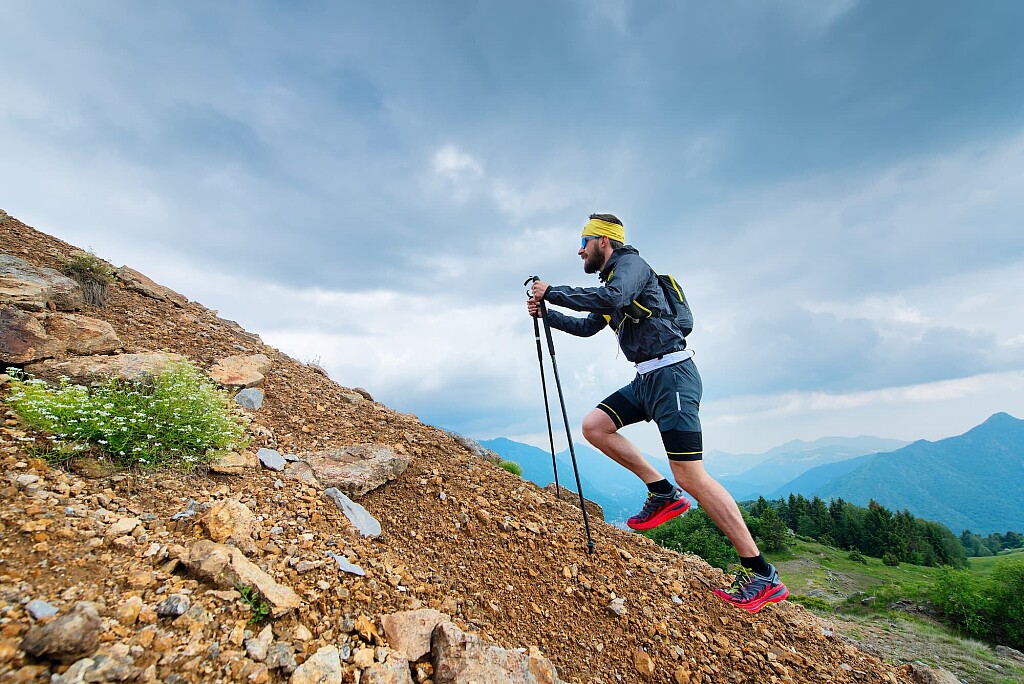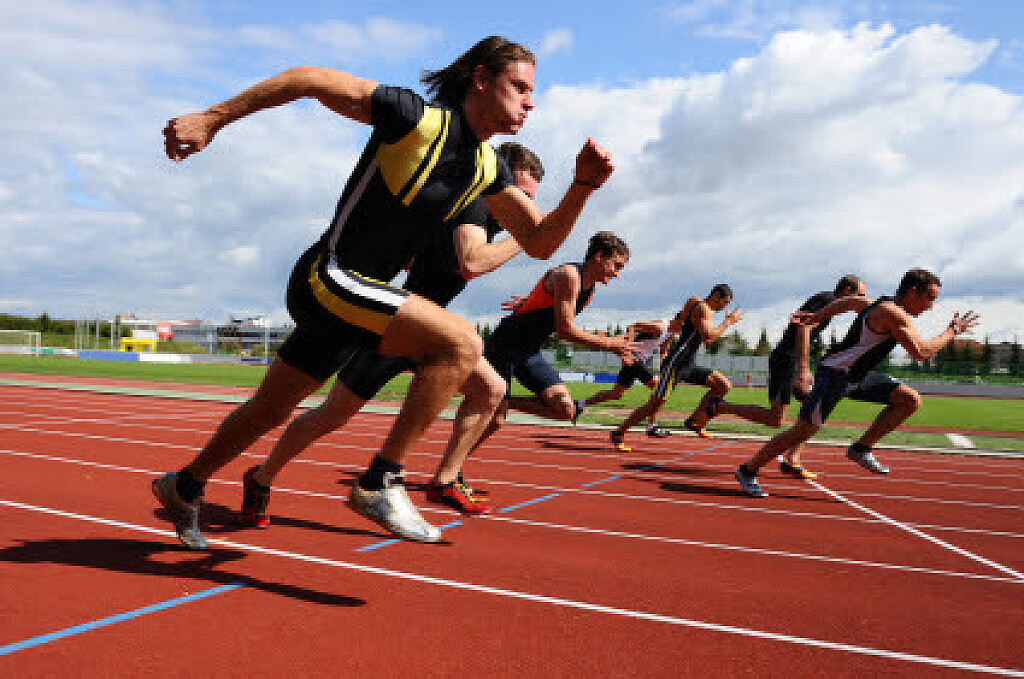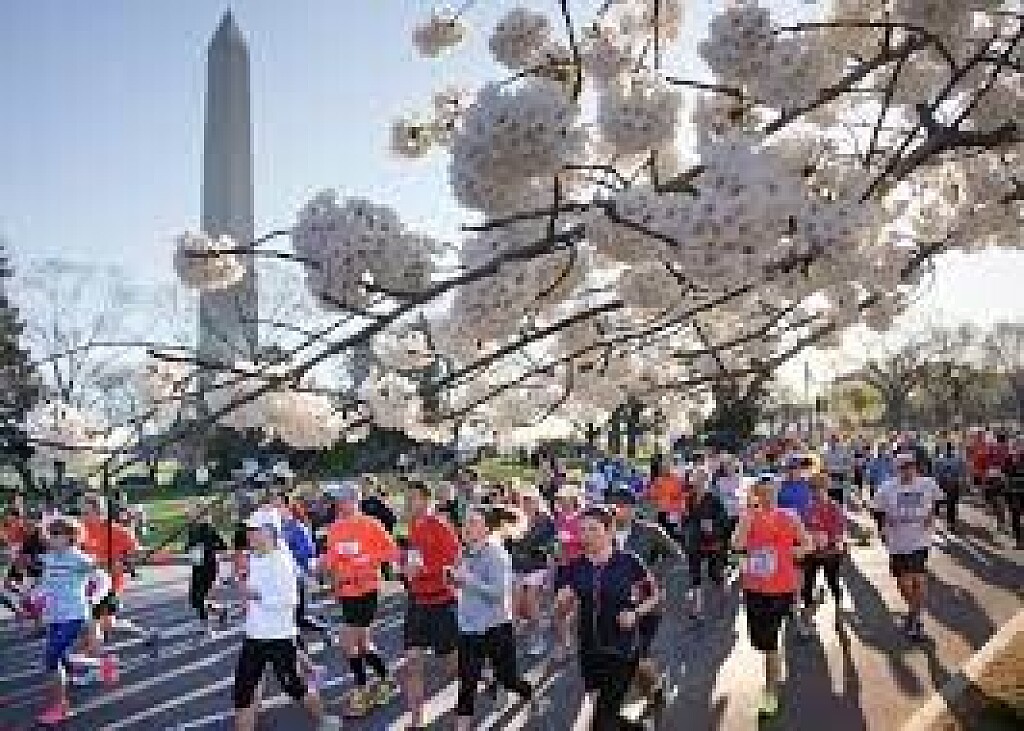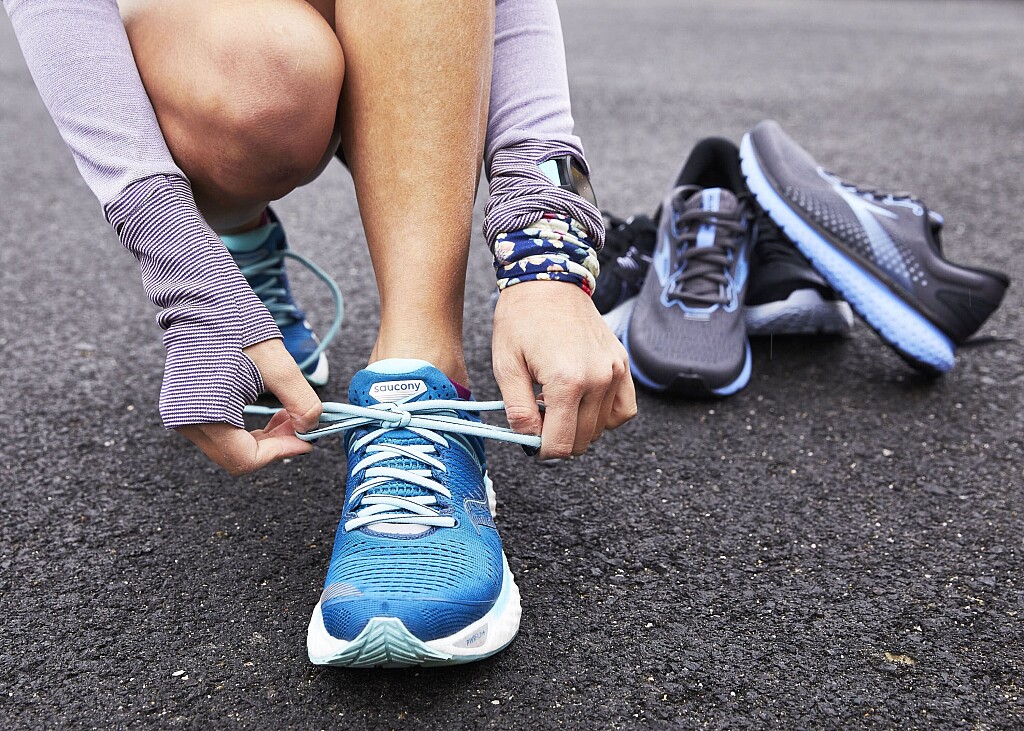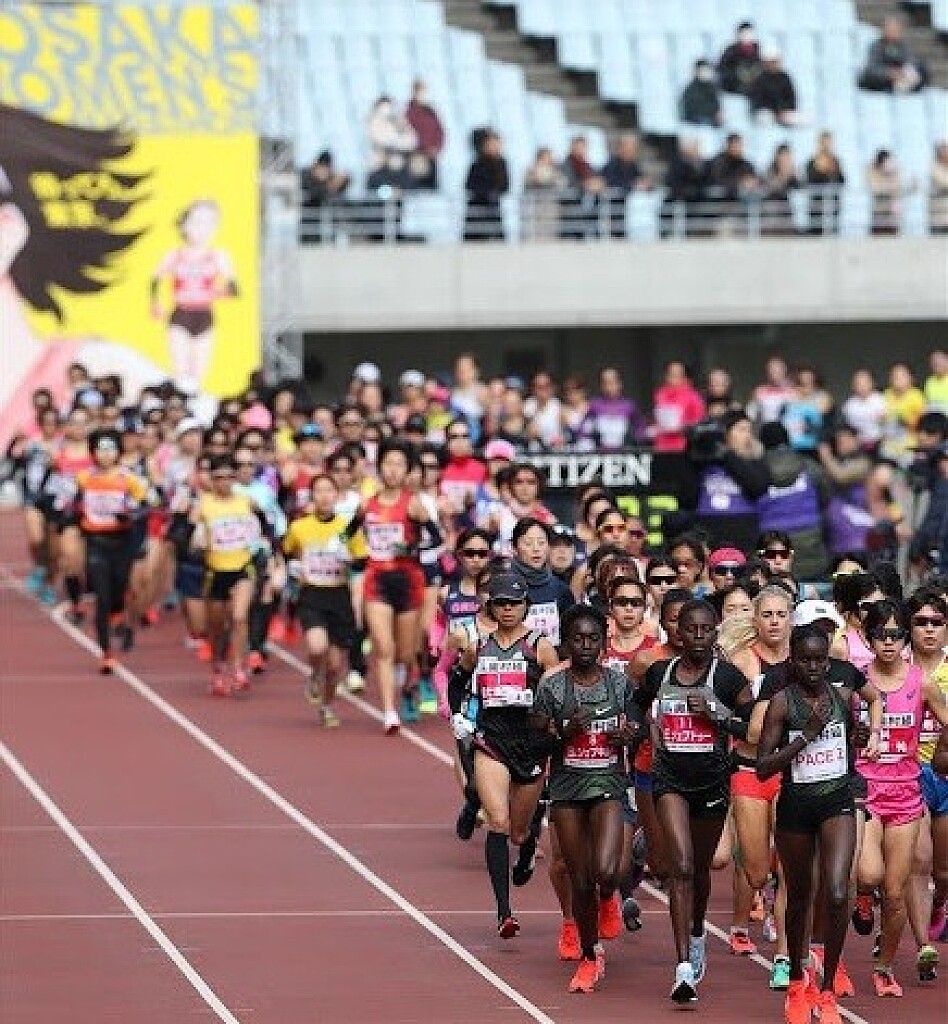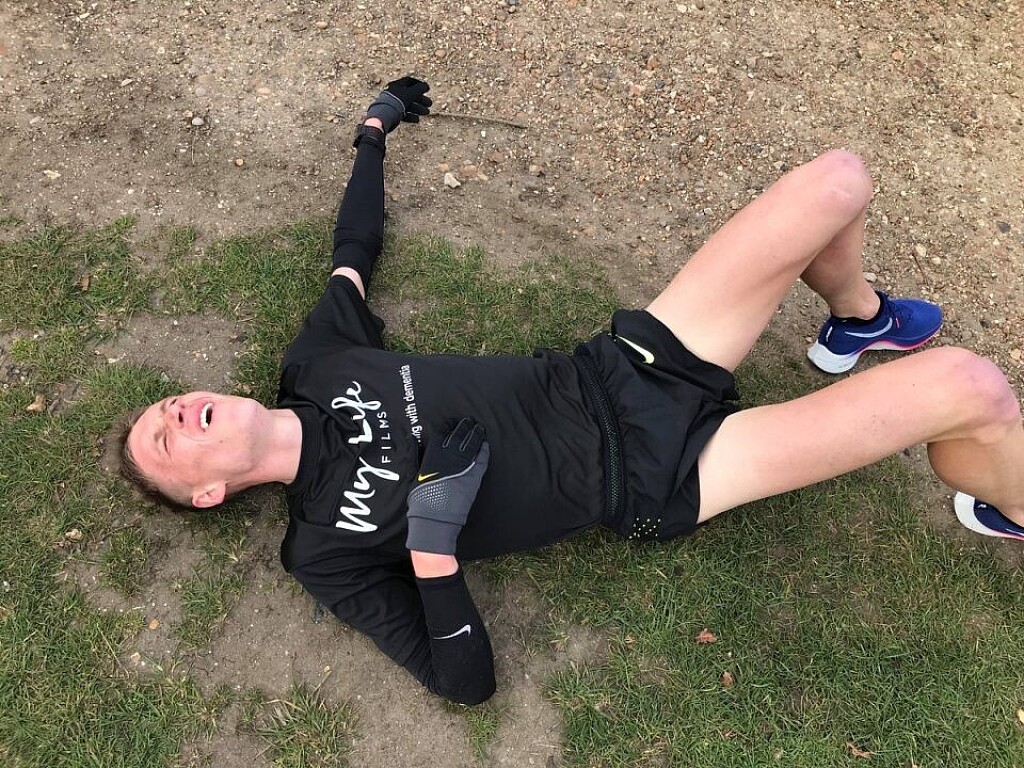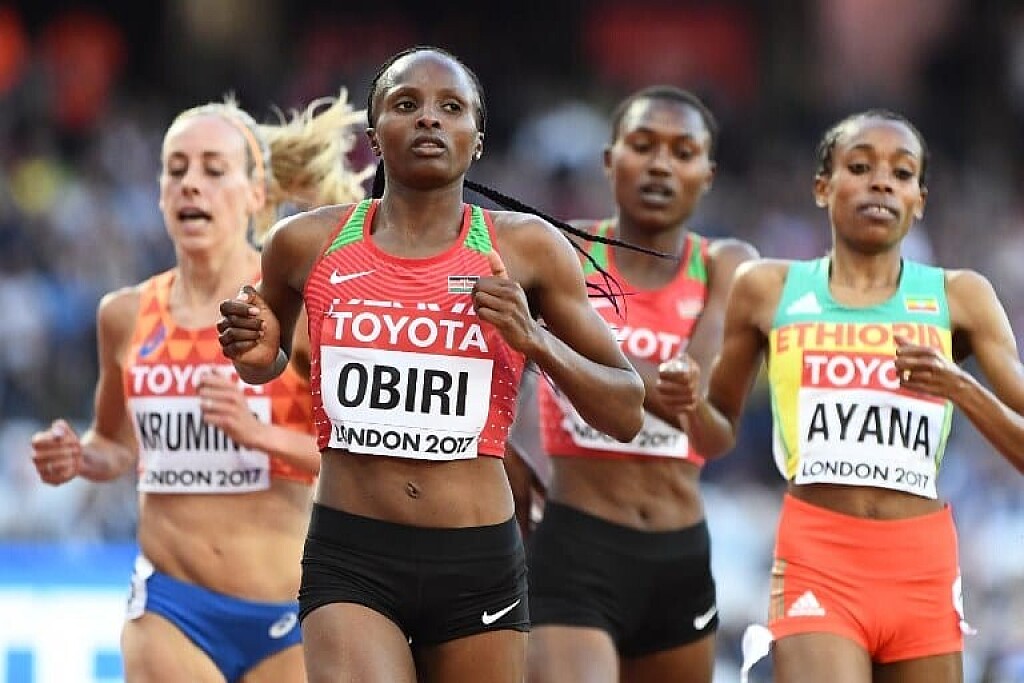Running News Daily
Top Ten Stories of the Week
1/1/2022
These are the top ten stories based on views over the last week.
Merry Christmas and happy holidays to all our MBR family from publisher Bob Anderson
Another year has passed. It has been a challenging two years for most of us all over the world. But I do think the worst is mostly behind us. The good news is that most races are coming back. The Boston Marathon will be held in April again and most likely the 2024 Paris Olympics will be held as planned.
The sad news is that we have lost a lot of good races. The Fukuoka marathon was first run 75 years ago. This year's race was the last. (Michael Githae was victorious at the 75th and final edition of Fukuoka International Marathon clocking 2:07:51.)

The pandemic was not the only reason, I am sure, why the Fukuoka Marathon was cancelled but it certainly was what pushed the organizers not to continue.
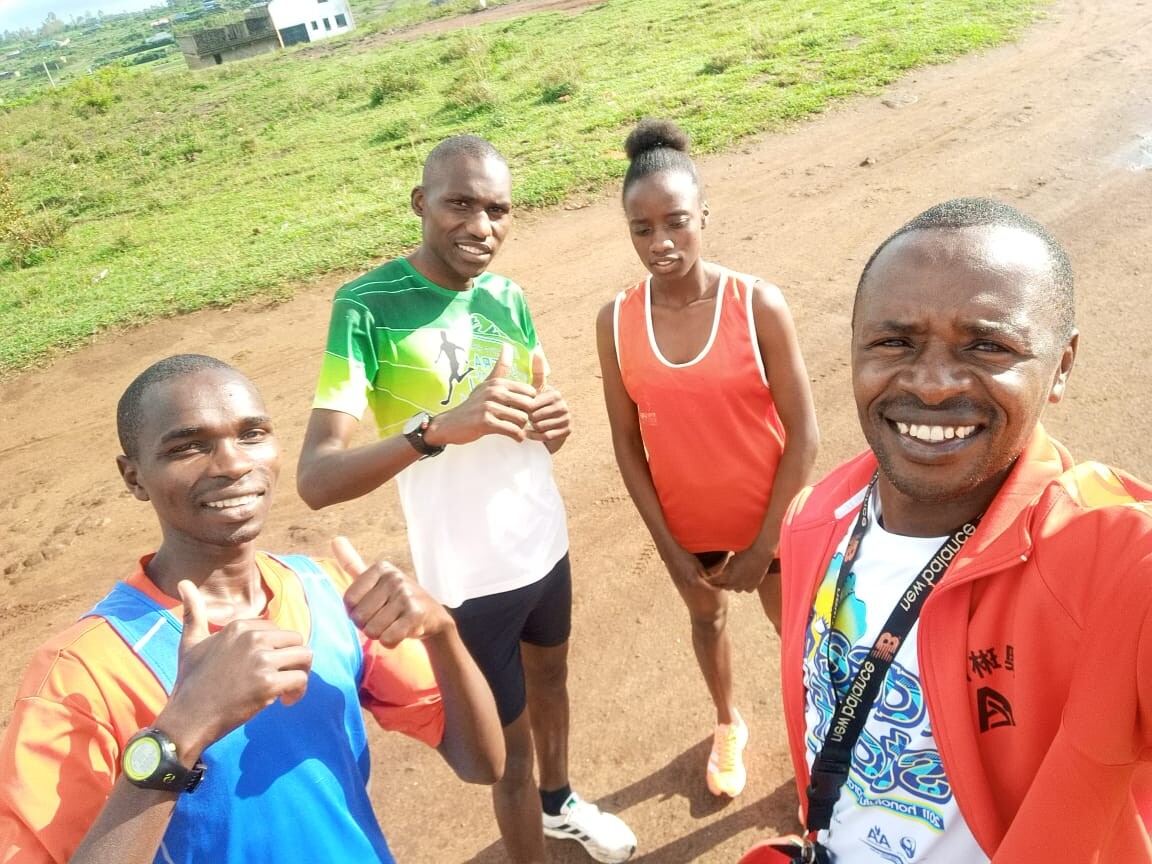
Many other races have already been cancellled or are still in limbo. From what I have read, there is no evidence that any runner has gotten Covid by attending a race. I am sure there might be some but certainly what many people feared did not happen. But things will get back to normal soon.
The good news is that many people decided to take up running during the last two years. With all these people now training the obvious next step will be to yet again offer them a variety of races. Training is great but running without racing is like writing and not publishing. Our focus should be on what races are being held and not on what races are not.
It is Christmas Day. Be sure to get in your Christmas run. I plan on getting in at least seven miles today. Since turning 70 a few years back I also now count walking.
Actually I think mixing in walking at any age is good for the body. I am going to average 8.8 miles daily for the calendar year and with the walking I have not had any serious injury all year long. (I need 49.6 more miles over the next seven days to reach my goal of 3212 miles. About 50 percent has been walking.)
I will be 74 Dec 28 and I can still run 6 miles at eight minute pace. I know there are lots of guys my age who are faster, that is super and I admire you. But making running (and walking) a regular thing at any pace is also great. We all just need to keep moving today, tomorrow and so on....
2022 is going to be a good year. Let's make it our best year yet! Merry Christmas and I need to get out before it starts raining again.
Second photo is me, my daughter, son-in-law and grandson Owen getting in four miles yesterday. My son, Michael will be here later today and we will get out as well. He just ran a half marathon yesterday placing second overall clocking 1:38 on a tough course.
As long as the rain is not too bad, we are hoping to do a 35 mile relay tomorrow. Just the two of us and our Jeep. One of us will be running all the time. We tag off and cover anywhere from a couple of miles up to eight or so on each leg. Fun event we came up with. This will be the third time we have done it.
Third photo is some of our KATA (Kenyan Athletics Training Academy in Thika Kenya) athletes with head coach julius the other day. (Bob owns the KATA operation and is very proud to be offering this training, educational and housing facility.). Our Academy manager is Florence and she is doing a good job making it all work day to day. She has a good staff as well and our athletes help out too.
(12/25/21) Views: 180Bob Anderson, MBR publisher
Five ways to exercise on a rest day
We love running, but running every day without rest days can take a severe toll. Whether you have rest days scheduled or take them as needed, they’re essential to keeping you injury-free.
However, when you don’t run, that doesn’t mean you need to be sedentary. Many serious runners will opt for an active recovery day. For an active recovery, you do an exercise that is far less strenuous than your usual run but keeps your blood flowing, gets your heart rate up, and helps your muscles rebuild.
Ready to discover the power of active recovery days? Try these top 5 forms of active recovery for runners.
1. Cycling
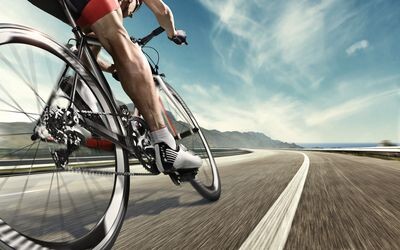
Cycling is an excellent form of exercise but is much gentler on the body than running. Going for an intense bike ride may be as intense as a daily run for amateur cyclists. Of course, that’s not the goal here.
If you’re looking for active recovery, hop on some cycles and do a few laps around your neighborhood or on an easy trail. Go for about 30 minutes at an easy pace.—this isn’t a race after all!
You’ll get your blood flowing to your muscles, and they’ll be able to rebuild without working too hard again.
2. Walking and Hiking

You love running, but perhaps just bringing your pace down could be the perfect way to rest actively. There are several benefits of walking, and it can even improve your running by forcing you to think about your form and gait at a slower pace.
If you go for a walk around the neighborhood and find yourself itching to go into a higher gear, opt for a hike instead. Take in some new and beautiful views while promoting muscle recovery.
3. Strength Training
Every time you run, you’re working out the same muscle groups. It can cause a muscle imbalance, leading to injury.
To balance out your muscles’ strength, use strength training exercises to target the neglected muscle groups. The arms, in particular, could use a good workout, but you can also further strengthen and stabilize your lower body.
4. Stretching
You’ve undoubtedly heard the importance of stretching before and after your run. But stretching itself can be a great exercise, especially on your rest days. By stretching, you can alleviate muscle pain and improve your flexibility.
Tight muscles lead to more significant injury than limber ones. So, create a regular stretching routine. You can even stretch before another exercise like your walk or bicycling.
Don’t just stretch your legs, but stretch your entire body. You can even try yoga and see how a more flexible, stable body affects your running.
5. Swimming
You don’t need any serious routine to get a good amount of exercise from swimming. Of course, you can do laps and improve your form and endurance. However, simply treading water and moving through the pool will give you a good calorie burn and keep your heart healthy for those wanting an active recovery.
If you get into the pool and are not sure what you’re supposed to do, start by swimming from one side of the pool to the other. You can freestyle, doggy-paddle, or work on a stroke.
As long as you’re moving your body, you’re supporting your health while allowing your muscles to recover from your serious running days.
Start Your Active Recovery
Don’t overwork your body by running and every day and causing an injury, but don’t wait around waiting for your next run. Get back to top form faster by moving your body and supporting your muscles in an even faster recovery.
(12/27/21) Views: 113Colorado Runner
Try this lactate-clearance workout to run faster
One of the things that sets the world’s best runners apart from the rest is their ability to quickly and efficiently clear lactate from their blood while they’re running. This makes them more efficient at processing energy and helps them to run faster.
Even if you’re not an elite, you can still teach your body to clear lactate faster through training, and this 400m workout will help you do exactly that.
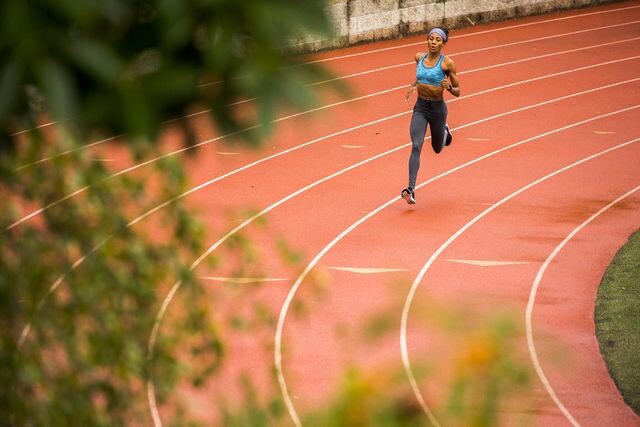
Lactate-clearance 400s
This workout is an adaptation of Portland, Ore. coach Richard Lovett’s rat-a-tat 400s. It involves a high volume of 400s with a short recovery to teach your body how to shuttle lactate out of your blood quickly between intervals. It is best done on a track, where you basically run one lap, then lightly jog back to the start line to go again. Each interval should be done at roughly 10K pace, so that you’re running fast enough to build up lactate, but not so fast that you can’t complete the workout.
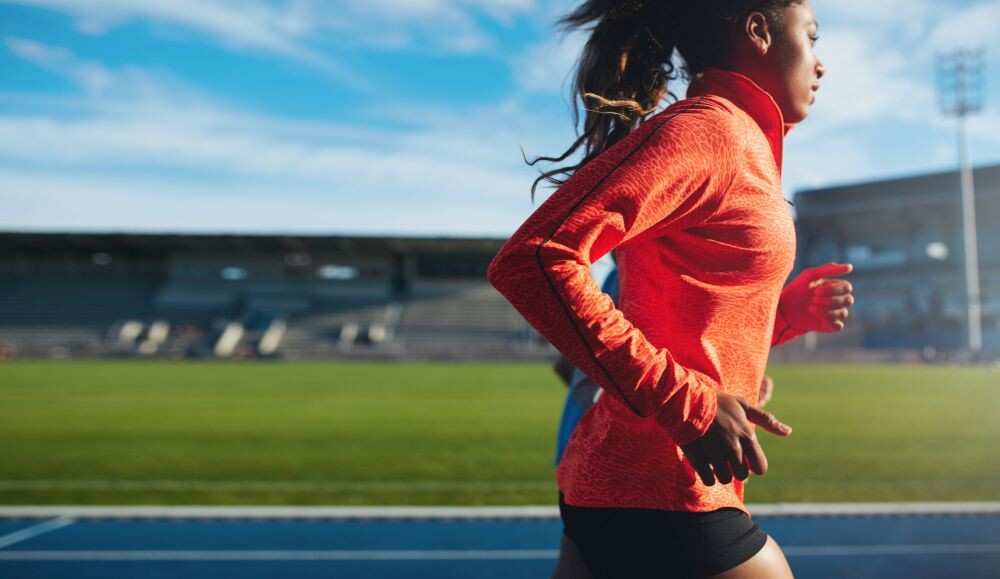
The length of your rest should change depending on how fast you run, and should be about 1/5th of the length of time it took you to complete the interval. For example, if you run your 400s in 90 seconds, your rest will be about 18 seconds. If you take two minutes to complete a lap, your rest should be about 24 seconds. In total, you should be aiming to complete 16-20 reps, so make sure you choose your pace wisely.
The workout
Warmup: 15-20 minutes easy jog, followed by form drills and strides
Workout: 15-20 x 400m at 10K pace with 15-25 seconds rest, depending on speed.
Cooldown: 10-15 minute easy jog, followed by light stretching.
(12/28/21) Views: 105Brittany Hambleton
Applications for 2022 Credit Union Cherry Blossom Ten Mile Run and 5K Run-Walk
After an unusual couple of years due to Covid-19 wreaking havoc on the global schedule of road races, the Credit Union Cherry Blossom race committee looks forward to welcoming runners back to Washington DC on April 3, 2022. Their hope is, of course, for a full field of runners to be greeted by blooming cherry blossoms at their peak for the 49th running of the Runner’s Rite of Spring®.
As has been the case for many, many years — except for 2020 when the in-person race was canceled, and 2021 when the race was held in September with strict Covid-19 restrictions — race officials expect demand for the race to exceed the limits on field size mandated by the National Park Service. Thus, entry into the 2022 Credit Union Cherry Blossom Ten Mile and 5K Run-Walk will be conducted by lottery, which will run from Monday, January 3, through 11:59 P.M. on Sunday, January 16, 2022. Lottery results should be posted on the event website (CherryBlossom.org) no later than Wednesday, January 19.
"Normalcy never felt so good," said Event Director Phil Stewart. "We are excited to have a race just like the old days. I am sure runners in the Washington metropolitan area and from around the country are feeling the same way, so we expect intense interest in the lottery."

Individuals who deferred their entry from the cancelled 2020 events will receive Guaranteed Entry Links (GELs) by email shortly before the lottery opens, and will be able to use them to bypass the lottery to gain entry directly into the 2022 Ten Mile Run and 5K Run-Walk. GELs must be used by January 15, the day before the lottery closes.
In addition to the in-person race on April 3, race organizers will also be offering a virtual edition of the runs to coincide with the National Cherry Blossom Festival from March 20 – April 17. Further details about the virtual Ten Mile and 5K Run-Walk can be found here. There will be no lottery for entry into the virtual runs, and registration will be open from January 3 through February 28.
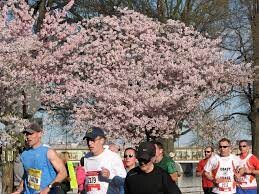
The Credit Union Cherry Blossom Kids’ Run is scheduled to be held on Saturday, April 2. Registration for the Kids’ Run will open on February 1; updated information will be available here.
The 2022 Credit Union Cherry Blossom Runs mark the 21st year of title sponsorship by Credit Union Miracle Day, and the 49th running of the race overall. Since 2002, over $10 million has been raised for the Children’s Miracle Network Hospitals, with $619,000 raised through the 2020 and 2021 virtual runs and the 2021 in-person runs.
About the Credit Union Cherry Blossom Ten Mile:
The Credit Union Cherry Blossom Ten Mile, organized by Cherry Blossom, Inc., a 501c(3) chapter of the Road Runners Club of America, is known as “The Runner’s Rite of Spring®” in the Nation’s Capital. The staging area for the event is on the Washington Monument Grounds, and the course passes in sight of all of the major Washington, DC Memorials. The event serves as a fundraiser for the Children’s Miracle Network Hospitals, a consortium of 170 premier children’s hospitals across North America. About one-third of the funds raised support Washington, DC’s own Children’s National (“Children’s Hospital”). The event also funds the Road Runners Club of America’s “Roads Scholar” program, designed to support up-and-coming U.S. distance running talent.
Credit Union Miracle Day, Inc., a consortium of credit unions and credit union suppliers in partnership with CUNA Mutual Group, PCSU and CO-OP Financial Services, is the title sponsor of the Credit Union Cherry Blossom Ten Mile Run, 5K Run-Walk, and Kids' Run. Presenting sponsors include ASICS, Garmin, MedStar Health; supporting sponsors are E*Trade, Gatorade, Potomac River Running and Suburban Solutions.
The event is a proud member of the PRRO Circuit (PRRO.org), a series of major non-marathon prize money road races in Washington, DC; Spokane, WA; and Utica, NY. The circuit is committed to a drug-free sport and funds drug testing at all circuit events in compliance with the standards of international and U.S. drug testing authorities.
In addition to being sanctioned by USA Track & Field and the Road Runners Club of America, the Credit Union Cherry Blossom Run has earned Gold Level Inspire Certification from the Council for Responsible Sport in recognition of its legacy of commitment to sustainability and thoughtful resource management. To learn more, visit CherryBlossom.org and follow the event on social media @CUCB and #CUCB2021.
About Credit Union Miracle Day:
Credit Union Miracle Day is a partnership of over 100 credit unions, CUSOs and partner organizations united to sponsor the Credit Union Cherry Blossom Ten Mile Run promoting awareness of the credit union difference and benefitting Children’s Miracle Network Hospitals nationwide.
About America's Credit Unions:
Credit unions are financial cooperatives that provide consumers choices for financial services such as checking accounts, investments and loans of all kinds including mortgages. Funds are federally insured, but unlike banks, there are no stockholders at credit unions. Earnings are returned to member-owners in the form of lower loan rates, higher savings rates, low or no-fee products and services. The credit union philosophy of placing members’ needs first is why more than 115 million Americans do their banking at a credit union.
(12/28/21) Views: 70How does lack of sleep affect running performance?
Sleep is one of the easiest ways to improve athletic performance, a fact that has been proven again and again by exercise physiologists, athletes and coaches. Unfortunately, many runners still don’t get enough sleep each night, and so are missing out on an opportunity to perform better in workouts and races.
If you’re still not convinced that sleep is all it’s cracked up to be, yet another study has demonstrated the detrimental effect lack of sleep has on running performance, this time by decreasing participants’ “readiness to perform.”
Athlete fatigue and readiness to perform
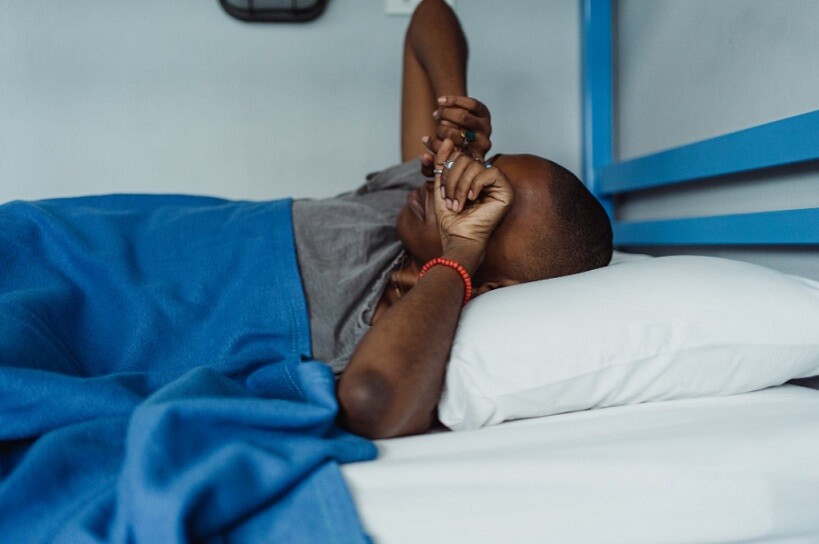
The study, published in The Journal of Strength and Conditioning Research, aimed to monitor the effects of sleep extension and sleep deprivation on endurance performance against heart rate indices like resting heart rate and heart rate variability. To do this, the researchers had nine athletes perform time trials on four consecutive days. They slept habitually before the first, but for the remaining three, they either had their sleep shortened by 2.5 hours, lengthened by 2.5 hours or remain normal.
The athletes who slept longer ran faster during their time trials compared to the group with normal sleep, but their rates of perceived exertion were lower. In other words, they performed better and it felt easier. Unsurprisingly, the athletes whose sleep was restricted showed a decrease in performance while their rate of perceived exertion went up — they ran slower, and it felt harder.

“Intensity ratios incorporating mean HR (heart rate) seem sensitive to effects of sleep duration on athlete readiness to perform,” the researchers concluded.
Runners should prioritize sleep
In their conclusions, the researchers added that when determining the intensity of your workout on any given day, it’s important to consider how long (and how well) you’ve been sleeping in the nights leading up to your workout. If you’re chronically lacking in sleep (i.e. getting less than seven to nine hours each night), you should consider a “sleep intervention” before increasing the intensity of your training.
Remember that not only will adequate sleep improve your performance in runs and workouts, it will also give your body a chance to recover properly so you have a lower risk of sustaining a running-related injury. If you’re having trouble catching enough z’s, check out these tips to get a better night’s sleep.
(12/30/21) Views: 58Brittany Hambleton
What should you eat on rest days? How to use your day off to fuel tomorrow's run
Pre-workout, post-workout and race-day nutrition get a lot of nutrition, but how and what you should eat on days when you’re not running is often viewed as less important. Some runners believe what you eat on your off-days doesn’t matter, others think they need to eat less on those low-intensity days and many more are simply confused when it comes to off-day nutrition. If you find yourself in either of those groups, continue reading to get the most out of your rest day.
Do I need to eat less on rest days?
This is arguably the biggest misconception runners have when it comes to off-day nutrition. While it may sound sensible that you require fewer calories on days when you’re not expending as many, this is a mistake for most runners. The purpose of your days off is to give your body a rest so that it can adapt to your training, and without proper fuel, your muscles won’t be able to properly re-build and your results will be stunted.
Any easy rule to follow to ensure your off-day nutrition is on-point is to try not to change your eating habits that drastically, if at all. On your rest day, you don’t have to worry about timing your nutrition with your workouts, but you should still focus on eating plenty of nutrient-dense foods, eating when you’re hungry and not stopping until you are satisfied.

What should I be eating?
Like we already said, your nutrition on your rest day shouldn’t be all that different from any other day of the week, but there are a few key nutrients to keep in mind. The first is protein. The goal of an off-day is to allow your muscles to rebuild and recover and protein is a very important part of this process. Ideally, protein should make up 20-25 per cent of the calories you consume on your off-day.
Even though you’re not running that day, carbohydrates are still a very important part of your rest day diet because it’s an opportunity to replenish your glycogen stores so that you’ll be ready to tackle the next day’s run. Your off-day is the perfect time to focus on high-fibre carbohydrate sources, since you don’t have to worry about the potential tummy troubles that could cause on a day that you’re running.

Your off-day is also an important time to eat plenty of vitamin and antioxidant-rich foods, since these will help decrease inflammation in your body which will help improve recovery. Healthy fats like omega-3s will also help this process, and should not be skipped on your recovery day. Foods like leafy green vegetables, brightly-coloured fruits and fatty fish like salmon or sardines are great additions to your off-day menu.
Finally, you should also make sure you’re drinking enough water. You likely don’t need as much water as you do on days when you’re running, but you still need to drink some to avoid dehydrating yourself for the next day’s run.
Can I eat treats on my off-day?
Of course! It is absolutely OK to indulge in some of your favourite goodies on your rest day, as long as these foods don’t completely replace other nutritious options. Remember, the point of a day off is to help your body recover, and by only eating less nutrient-dense foods you’re limiting your body’s ability to repair.
Is intuitive eating a good strategy to use during my off-day?
Yes. Because you don’t have to worry about timing your nutrition with your workouts, your off-day is the perfect time to fully listen to your body. Like we said earlier — when you’re hungry, eat. When you’re full, stop. The only time this doesn’t apply is if you find you’re appetite is quite low on your off-day. If this is the case, you will have to be more intentional with making sure you eat at regular intervals to avoid under-fuelling.
The bottom line
Your day off is not the time to cut back on food and calories. Even though you’re not being as active that day, your body needs that energy to repair itself so you can be ready to get back out there the next day. Under-fuelling on your rest day will only increase your risk for injuries and decrease your ability to perform well in workouts.
Yes, you can certainly be a little less regimented with your nutrition plan on days when you’re not running, but your off-day is an important nutritional opportunity, so make sure you fuel yourself well and enjoy some of your favourite foods to get the most out of your rest day.
(12/29/21) Views: 57Brittany Hambleton
Want to prevent injuries? Wear cushioned shoes, a recent study found that runners who wore more cushioned footwear experienced fewer injuries
The highly cushioned shoe versus the minimalist shoe debate has been a topic of conversation among runners for years, but it appears the pendulum is swinging in the direction of cushion. In a recent study, researchers found that runners who wore more cushioned shoes experienced lower rates of injuries than those who wore harder shoes.
The study
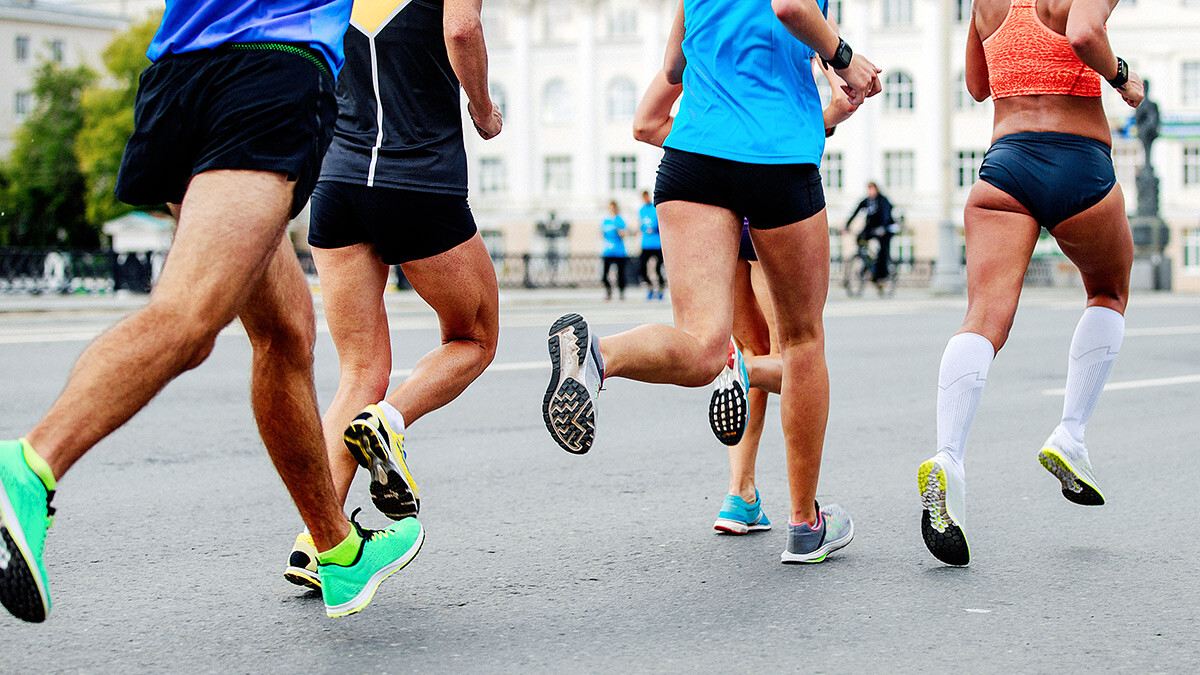
The study, published in the American Journal of Sports Medicine, aimed to determine how shoe cushioning influenced injury risk in recreational runners, and whether the association depends on the runner’s body mass. To find out, they gave 848 recreational runners one of two shoe prototypes: one that had soft cushioning, and one that did not. Participants were also classified as either light or heavy and were followed for six months regarding their running activity and injury rates.
The researchers found that the runners who received the harder shoes had a higher risk for injuries compared to the runners in the softer shoes. Interestingly, their data indicated that the lighter runners experienced higher injury rates in harder shoes, while the heavier runners did not, causing them to conclude that the relative protective effect of cushioned shoes was only present for lighter runners.
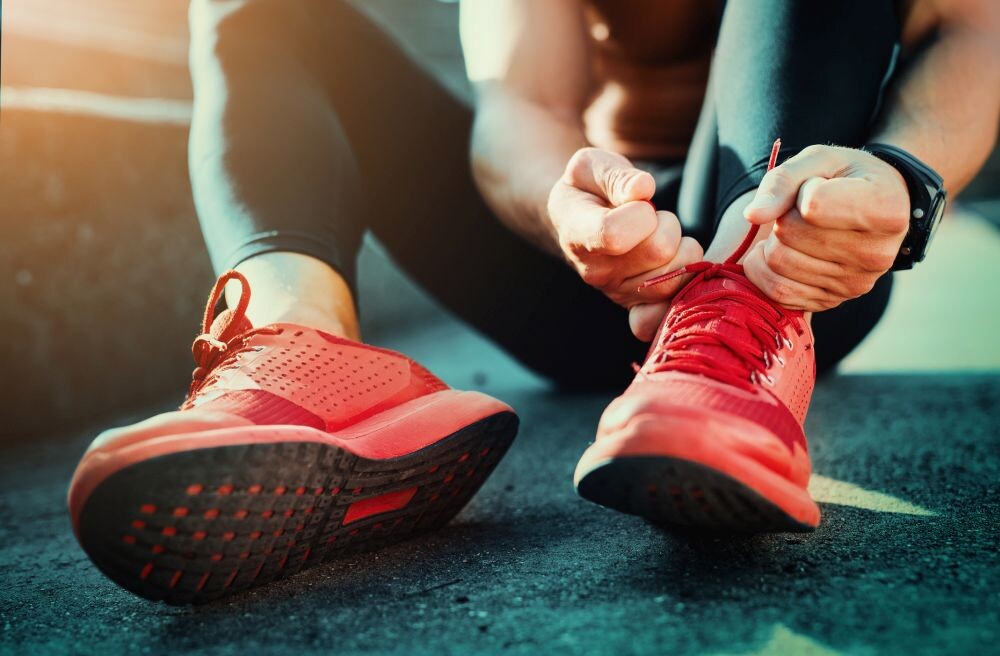
What does this mean for runners?
This study used a large pool of participants, which makes it a more credible source of information. That being said, there are many reasons why a smaller or lighter runner might experience a higher rate of injuries beyond what type of shoe they wear. Still, this study does seem to make a case for some runners to wear highly-cushioned shoes in order to prevent injuries.
There is a wide range of shoes available on the market today, that range from ultra-cushioned to barely-there, and it may take some trial and error to figure out which shoe is best for you. If you’re having trouble finding your perfect shoe, check out these tips when shopping for your next pair.
(12/24/21) Views: 54Brittany Hambleton
2022 Strong Elite Field for Osaka International Women's Marathon
The organizers of next month's Osaka International Women's Marathon have announced the invited field of 43 for Japan's last remaining purely elite marathon. Like the 2021 race, despite the event's name it's a Japanese-only field with male pacers, kind of inevitably on the first point given Japan's ongoing border fortification but a bit regrettably on the second.
For a domestic field it's pretty good, all 17 of the women in it who've run under 2:35 in the last three years having done it either here or in Nagoya. 2020 winner and unlucky Olympic alternate Mizuki Matsuda (Daihatsu) is the favorite, with support from Sayaka Sato (Sekisui Kagaku), the 4th-fastest Japanese woman in 2020 and 2021, 2019's fastest Reia Iwade (Adidas), and 2021's 3rd and 4th-placers Yukari Abe (Shimamura) and Mao Uesugi (Starts).
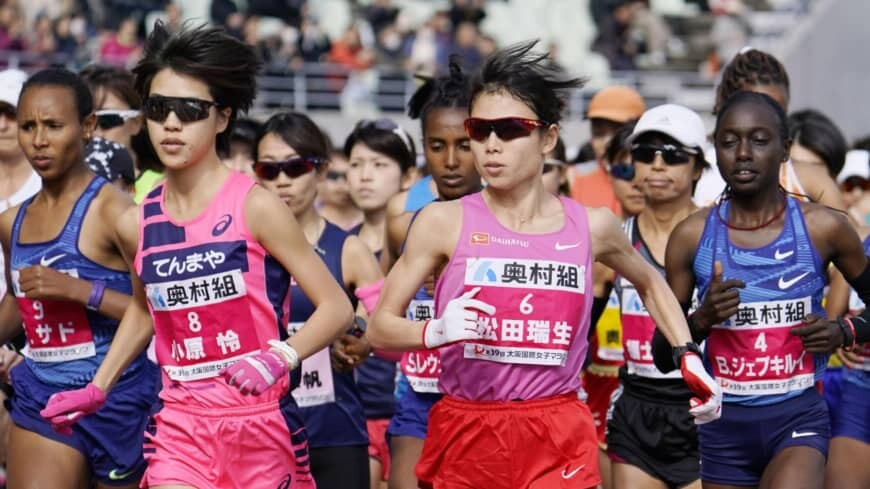
Six other women in the field have run under the 2:27:00 B-standard for qualification for the 2024 Olympic marathon trials, including current JMC Series I leader Haruka Yamaguchi (AC Kita), so with the qualifying window now open the race to finish in the 4th-6th place B-standard bracket should be just as good as the one to make the 1st-3rd place A-standard bracket.
Alongside the marathon, the Osaka Half Marathon will also feature two-time Osaka International winner Kayoko Fukushi (Wacoal) in her final race.
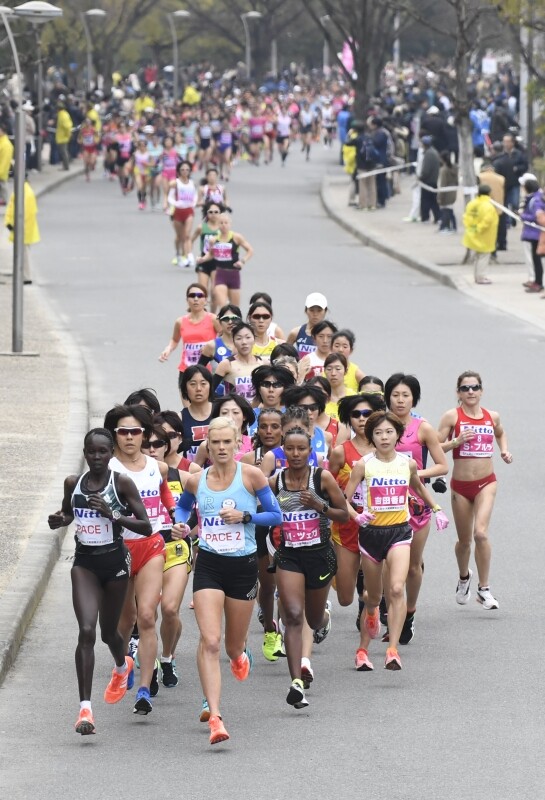
Check back closer to race date for options on streaming and following the race live.
41st Osaka International Women's Marathon.
- Mizuki Matsuda (Daihatsu) - 2:21:47 (1st, Osaka Int'l 2020)
- Sayaka Sato (Seiksui Kagaku) - 2:23:27 (5th, Nagoya Women's 2020)
- Reia Iwade (Adidas) - 2:23:52 (5th, Nagoya Women's 2019)
- Yukari Abe (Shimamura) - 2:24:41 (3rd, Osaka Int'l 2021)
- Mao Uesugi (Starts) - 2:24:52 (4th, Osaka Int'l 2021)
- Mizuki Tanimoto (Tenmaya) - 2:25:28 (11th, Nagoya Women's 2019)
- Ayano Ikemitsu (Kagoshima Ginko) - 2:26:07 (12th, Nagoya Women's 2019)
- Ayumi Hagiwara (Toyota Jidoshokki) - 2:26:15 (5th, Oaka Int'l 2021)
- Natsumi Matsushita (Tenmaya) - 2:26:26 (3rd, Nagoya Women's 2021)
- Haruka Yamaguchi (AC Kita) - 2:26:35 (7th, Osaka Int'l 2020)
- Hanae Tanaka (Daiichi Seimei) - 2:26:49 (5th, Nagoya Women's 2021)
- Misaki Kato (Kyudenko) - 2:27:20 (8th, Nagoya Women's 2021)
- Madoka Nakano (Iwatani Sangyo) - 2:27:39 (4th, Osaka Int'l 2019)
- Shiho Kaneshige (GRlab Kanto) - 2:28:51 (16th, Osaka Int'l 2020)
- Anna Matsuda (Denso) - 2:29:52 (8th, Osaka Int'l 2021)
- Rie Kawauchi (Otsuka Seiyaku) - 2:31:34 (17th, Nagoya Women's 2021)
- Ayano Ikeuchi (Denso) - 2:33:29 (19th, Nagoya Women's 2021)
- Mai Fujisawa (Hokkaido Excel AC) - 2:35:52 (1st, Kanazawa 2021)
- Asuka Yamamoto (Edion) - 2:36:14 (21th, Osaka Int'l 2020)
- Tomomi Sawahata (Sawahatas) - 2:37:02 (1st, Gunma 2021)
- Mai Ito (Otsuka Seiyaku) - 2:38:07 (25th, Nagoya Women's 2021)
- Michi Numata (Toyota Jidoshokki) - 2:38:30 (39th, Nagoya Women's 2019)
- Saki Tokoro (Kyocera) - 2:38:49 (40th, Nagoya Women's 2019)
- Mitsuko Ino (Linkstyle) - 2:39:04 (10th, Osaka 2019).
(12/28/21) Views: 53Brett Larner
Does running hard suppress your immune system?
Given the risk of COVID-19 infection being heavy on everyone’s mind, should we be running hard?
It’s an idea that keeps popping up on social media at the moment to tell people one of the many reasons that runners are selfish and should just stay at home instead.
It’s “common knowledge” that hard workouts suppress your immune system, but two academics at the University of Bath, John Campbell and James Turner, wrote a paper in 2018 titled “Debunking the myth of exercise-induced immune suppression” and it’s worth a read.
What we thought
A lot of studies, mostly back in the 80s and 90s, are the basis of the consensus that hard activity suppressed the immune system. Some found a link between runners undertaking races and developing upper-respiratory tract infections (URTIs), whilst others saw a reduction in immune cells (lymphocytes) in the blood after hard workouts.
Pretty clear cut right? But possibly a bit of misdirection. Firstly most of the studies looking at post race infections were self-reported and when infections were actually verified by researchers the rates were actually a lot lower.
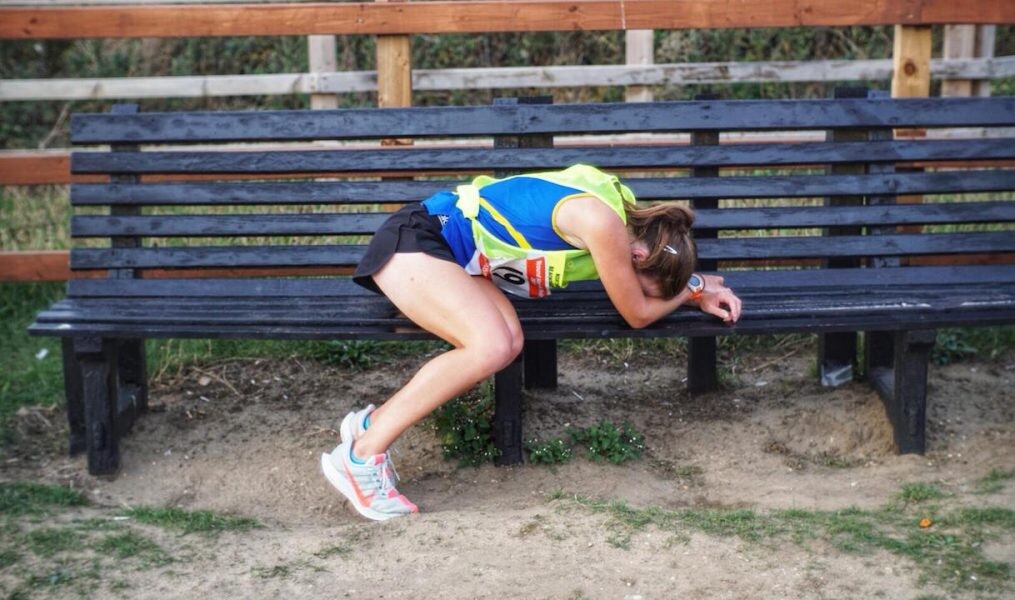
Then there are other factors to consider. Anyone going to a big gathering, like a marathon, is raising their risk of infections too, hence our current social distancing restrictions.
Turner and Campbell highlight a study on the Hajj, a mass Muslim pilgrimage that also showed an increase in URTIs for the participants. Big groups, not hard exercise, can spread communicable diseases.
Which brings us to the other potential increase around races, travel, specifically air travel, which again raises your risk. Take the falsely high numbers from self-reporting, the increased risk of a mass event and the numbers that travel to a big city marathon and the numbers don’t even beat the normal population.
The blood doesn’t lie?
The second set of studies that looked at immune function by examining lymphocytes in the blood is surely a nail in the coffin though? After a hard work out there was a window of time, up to 24hrs, that saw lower numbers in the blood.
The problem is if this was a destruction of the cells then it isn’t possible that these would regenerate in just 24hrs. Maybe there is another reason for the lower levels in the blood?
Studies, albeit done on exercising rodents, have provided an answer. The simplest way to put it is that “exercise redeploys immune cells to peripheral tissues [gut, lungs] to conduct immune surveillance.
The numbers don’t drop, the body is just redistributing the immune cells to the places we might expect infection to infiltrate, like the gut and the lungs. Post exercise we’re just ready for the attack and the troops are on the front line, not back at base camp.
Exercise is good for your immune system
“If exercise is portrayed as being ‘immunosuppressive’ then this might discourage patients and clinicians from participating in and recommending exercise,” discusses Simpson et al in a 2020 paper, “and could also project the wrong message to the vast majority of the population who would benefit from increasing their physical activity levels to improve, not only immune function, but also general health and wellness”
Now that we’ve got some momentum let’s keep going. Exercise is good for your immune system and makes you less likely than the general population to get sick.
The Bath University department for health experts continue by highlighting that regular bouts of exercise can help “limiting or delaying the ageing of the immune system’ and that “a physically active lifestyle reduces the incidences of communicable (eg. bacterial and viral) and non-communicable (eg cancer) diseases.
Hard workouts, previously thought to suppress the immune system and create a “window” for illness to infect, have been misunderstood and do not leave you more vulnerable.
One potential immunosuppressant though is nicotine, so if you are worried it’s probably best to avoid chain smoking for the next couple of months. Use the money saved to get yourself a treadmill maybe?
We’re not saying you should be going out every single run smashing the life out of it (the benefits of easy running we have covered in depth before), but completely avoiding your harder sessions altogether isn’t necessary either.
In a 2020 paper that presented a discussion between “Yes” and “No” camps on this subject the majority of studies that showed that vigorous exercises led to an increased rate of infection were undertaken around competitions, a time of higher exposure for all.
If the general public are taking note of current government advice then this is one aspect of risk that should be heavily reduced in the current situation. No mass participation activities or group training sessions removes a big risk of exposure for us all.
Rather than avoiding hard exercise, which could actually boost our immune system, we should be focusing on the other potential factors such as sleep, nutrition and exposure to potential infection.
Speaking to Dr. Turner “if a runner, given the current circumstances, can continue with their normal training it shouldn’t cause problems to their health”.
“If your heavy training leads you to be sleep deprived [or under-fuelled], for example, then it’s worth reducing the volume and intensity to a lower level.”
There simply isn’t enough solid evidence to support the “open window” caused by hard training efforts, but instead we should be looking at other factors that leave us at risk, big gatherings, sleep deprivation and a poor diet, as well as asking yourself the question “do I need to be doing X, Y or Z session given my races have all moved to the Autumn?”
(12/24/21) Views: 50Robbie Britton (Fast Running)
Kenyan Hellen Obiri, great star of the Nationale-Nederlanden San Silvestre Vallecana Internacional
The Kenyan athlete Hellen Obiri, double Olympic runner-up and 5,000 meter outdoor world champion, seeks to be crowned on December 31 at the Nationale-Nederlanden San Silvestre Vallecana International, being one of the favorites in the women’s category.
In 2018, in a record race, she could only be second after her compatriot Brigid Kosgei – current world marathon record holder -. Therefore, for this 2021, the objective is twofold: to climb to the top of the podium in the Vallecas Stadium, and snatch the record of the event from Kosgei, of 29:54.
Their biggest rivals for victory will be the trio of African athletes from the NN Running Team. The Ethiopians Degitu Azimeraw and Haven Hailu, and the Israeli Lonah Salpeter, will force Obiri to show his entire class if he wants to add this triumph to his extensive international record.
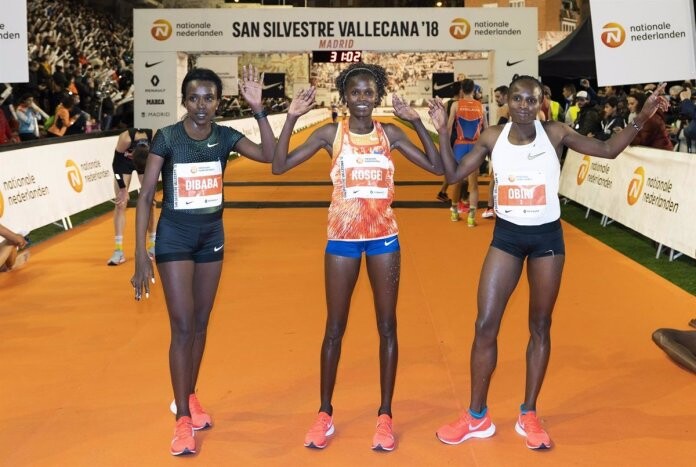
THE BEST SPANISH FUNDS WILL BE IN LA VALLECANA
Among the Spanish favorites, the Cantabrian Irene Pelayo is postulated as the best positioned. He arrives at the Nationale-Nederlanden San Silvestre Vallecana with the best marathon record of the season, with 2:29:16. In addition, you already know what it is to be the best national on December 31, with a seventh place and personal best in 10K in 2019 (32:46).

Laura Méndez is second in the national marathon ranking. The Valencian debuted in that distance in style, with 2:29:28, which earned her a place for the Tokyo Olympics. His best personal record in 10K is 33:01 achieved in Valencia in January 2020.
Another classic athlete in the test is the Olympian in Rio 2016 Azucena Díaz. A three-time national half-marathon champion, once a 10K champion, the 39-year-old veteran will not miss her appointment with Vallecas, where she came fourth in the 2017 edition with a time of 33:06.
But if we talk about the fastest in the test, Clara Viñarás can boast of having destroyed the 33-minute barrier. He did it last year in the 10K in Alcobendas with 32:42. With those credentials, and a best mark of the season of 34:49, we can expect the best of the Madrilenian, current national runner-up of 3,000 meters hurdles.
(12/28/21) Views: 48George Williams





